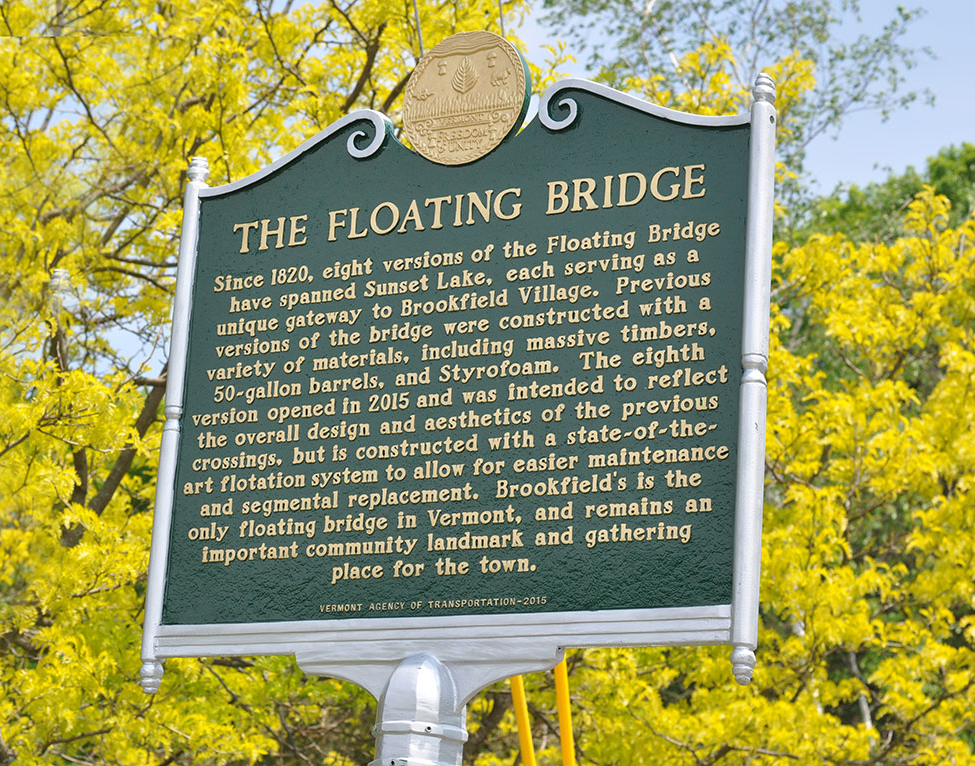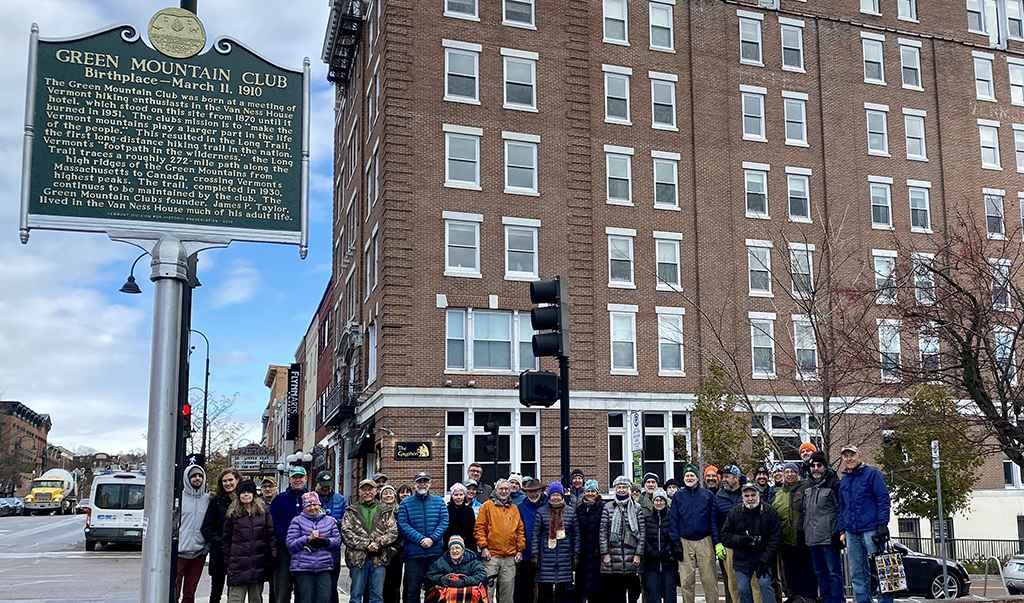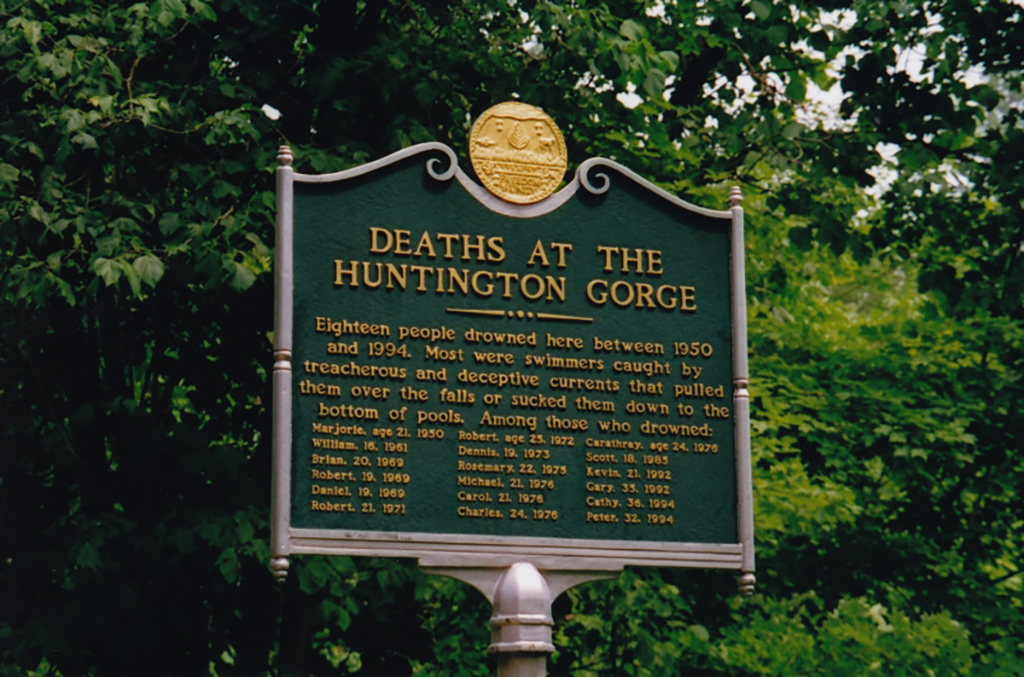
Vermont Historic Markers Highlight History, People and Places
November 24, 2021
Vermont historic markers are in every corner of the state—from Addison to Woodstock. The newest Vermont historic marker stands in Burlington at the birthplace of the Green Mountain Club.
Of the nearly 300 Vermont historic markers across the state, the Green Mountain Club’s plaque is where James P. Taylor originally conceived of The Long Trail. Taylor founded the Green Mountain Club to bring his vision to life at a meeting at the Van Ness House, a hotel once located the corner of Main and St. Paul Streets in Burlington until it burned in 1951.
The state’s Roadside Historic Site Marker Program began with the legislature’s 1947 establishment of the Historic Sites Commission, now the Division for Historic Preservation.

-“It’s an important reminder that after 111 years, the Green Mountain Club is still here,” Mike DeBonis, the Green Mountain Club’s executive director, told a crowd at the historic marker’s unveiling in Burlington on Nov. 19. Photo courtesy of the Green Mountain Club.
Vermont Historic Markers: Places of Interest, People to Remember
Ever since the historic marker program started, Vermont’s green and gold plaques have been made by Sewah Studios foundry in Ohio. The first Vermont markers were installed in 1949 at several locations, including the Hildene estate in Manchester, Rudyard Kipling’s home near Brattleboro, and The Long Trail parking lot along Route 2 in Bolton.
But the historic marker program isn’t just about history or places of interest. The markers also showcase Vermont people, including globe maker James Wilson, educator, minister, and politician Alexander Twilight, former first lady Grace Goodhue Coolidge, author Dorothy Canfield Fisher, and 21st President Chester A. Arthur.
“The markers highlight history, places, people that are not commonly apparent. They provide a spotlight into a building or someone’s story, which sparks interest,” says Laura Trieschmann, a state historic preservation officer who oversees the Roadside Historic Marker Program.
Some signs mark tragic events and deaths. A marker at Huntington Gorge in Richmond lists names of people who died there between 1950 and 1994. In Hartford, a marker stands near the site of an 1887 train crash that killed 30 people.

-Courtesy of UVM Landscape Change Program
From Burlington to Pomfret and Beyond
Trieschmann says Vermont receives between 10 to 15 applications each year for historic markers. In addition to approving new markers, the state restores and repaints about 8 to 10 markers annually.
While Vermont has only about 300 markers, states like Virginia and Pennsylvania have more than 2,500. Still, while traveling around Vermont, there’s no shortage of markers to come across.
On Route 30, there’s one for the Dorset Quarry, the first marble quarry in the nation. On Route 65 in Brookfield, a marker stands for The Floating Bridge, the only bridge of its kind in Vermont. In Glover, there’s a sign for Runaway Pond, where two billion gallons of water drained from the pond in 90 minutes and traveled north, filling Lake Memphremagog in 1810.
When I asked Trieschmann to share a marker location with an offbeat backstory, it was challenging to name just one.
–The marker for “Fisk Trophy Race of 1937 and the Longest Running Alpine Ski Race Held at Once Location in the United States” is located at the top of Suicide Six in South Pomfret so skiers can easily see it. “This is an unusual location for us,” she says.
–The first marker recognizing LGBTQ was placed on the lawn of the State House in Montpelier next to the State Supreme Court to commemorate Vermont equality for same-sex couples. “It was also one of the only to recognize our recent past,” she says. “There was great support for the production and location of this marker, which has resulted in other LGBTQ themed markers.”
–The first bilingual marker was the “First International Ice Hockey Game” in Burlington. One side is English and the other side is translated into French. There are now three bilingual markers in Vermont, Trieschmann says.
–One Vermont historic marker stands in the Commonwealth of Virginia, which is exceptionally rare, Trieschmann says. The marker highlights the actions of Vermonters at the Battle of Cedar Creek.
Learn more about Vermont Historic Markers




No Comments